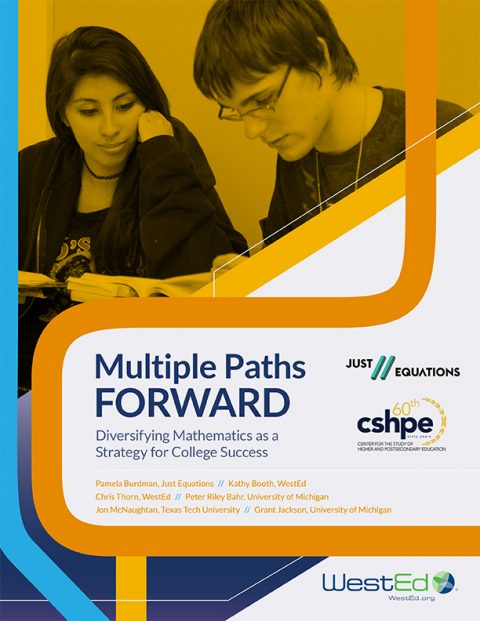
This new report highlights the importance of diversifying math pathways in college to improve quantitative literacy and shorten students’ routes to a degree.
Across the country, colleges and universities are now offering multiple pathways through mathematics, instead of the one-size-fits-all algebra sequence, which is designed as a stepping stone to calculus. For students in majors that don’t depend on calculus, other sequences in areas like statistics, quantitative reasoning, and business math offer relevant and rigorous alternative pathways to a degree.
This report highlights the importance of diversifying math pathways in college to advance math learning and shorten students’ routes through college. In underscoring how this strategy can help community colleges in California implement new policies to shorten or eliminate students’ time in remedial classes, the report examines:
- The growth of diversified pathways: At least least two dozen state higher education systems are adopting this approach.
- The rationale for the move to multiple math pathways: The ways math is being used across different disciplines, along with concerns that traditional offerings present dull or dead-end pathways for many students, has led education leaders and math disciplinary associations to press for change.
- The effectiveness of diversified pathways initiatives to date: Initiatives to diversify math pathways have demonstrated as much as a four-fold increase in students’ completion of the math requirements they need to advance in their education;
- The range of pathways being implemented nationally: The algebra-centric STEM pathway, along with statistics and quantitative reasoning are the three most common pathways, but states and colleges are also adopting pathways such as mathematical modeling and business mathematics.
- The extent to which California community college students are taking advantage of this approach. An analysis conducted for this report, the first of its kind, finds that California has a diverse set of college-level math offerings, particularly in the area of statistics. However, most students never take these courses – almost half of students only get as far as remedial math. The majority of these remedial offerings are algebra-based courses that not all students need in their majors.
As colleges and universities implement new policies designed to streamline students’ progress through their math requirements, ensuring that any proficiency requirements are aligned with students’ majors, colleges can ensure that students get farther in math and acquire the skills they need for success in their careers and lives.